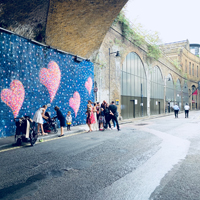Driving in Margate
Summary: Driving in a new country can be daunting. These tips offer insight into what to expect when driving in Margate.
1. Understanding the Driving Rules
Driving in Margate, is similar to other parts of the country. The UK drives on the left-hand side of the road, and the driver's seat is on the right-hand side of the car. It's crucial to familiarise yourself with the UK's Highway Code, which includes all the rules and regulations for driving in the country.
2. Car Recommendation
As for the type of car, it depends on your personal preference and needs. However, smaller cars are often more practical for navigating narrow streets and finding parking. Manual transmission cars are more common in the UK, but automatics are also available.
3. Parking in Margate
Finding parking in Margate can be challenging, especially during the summer months when the town attracts a lot of tourists. However, there are several car parks available, and some residential areas offer on-street parking. Parking fees vary depending on the location and duration.
4. Driving with an International License
Foreigners can drive in the UK with an international driving permit (IDP) for up to 12 months from the date they last entered the country. After this period, you will need to exchange your foreign license for a UK one or take a driving test to get a UK license.
5. Getting a UK Driver's License
To get a UK driver's license, you will need to apply to the Driver and Vehicle Licensing Agency (DVLA). The process involves a theory test and a practical driving test. If your driving license is from a country that has a license exchange agreement with the UK, you may be able to exchange it for a UK license without taking a test.
6. Be Prepared for Roundabouts
Roundabouts are common in the UK, and they can be confusing for those not used to them. Make sure you understand the rules for entering and exiting a roundabout. Generally, you should give way to traffic coming from the right and signal your intention to exit.
7. Speed Limits
Speed limits vary depending on the type of road and the area. In built-up areas, the limit is usually 30 mph, while on single carriageways it's 60 mph, and on dual carriageways and motorways it's 70 mph. Always check for signs indicating the speed limit.
About the Author
 Joshua Wood, LPC joined Expat Exchange in 2000 and serves as one of its Co-Presidents. He is also one of the Founders of Digital Nomad Exchange. Prior to Expat Exchange, Joshua worked for NBC Cable (MSNBC and CNBC
Primetime). Joshua has a BA from Syracuse and a Master's in Clinical and Counseling Psychology from Fairleigh Dickinson University. Mr. Wood is also a licensed counselor and psychotherapist.
Joshua Wood, LPC joined Expat Exchange in 2000 and serves as one of its Co-Presidents. He is also one of the Founders of Digital Nomad Exchange. Prior to Expat Exchange, Joshua worked for NBC Cable (MSNBC and CNBC
Primetime). Joshua has a BA from Syracuse and a Master's in Clinical and Counseling Psychology from Fairleigh Dickinson University. Mr. Wood is also a licensed counselor and psychotherapist.
Some of Joshua's articles include Pros and Cons of Living in Portugal, 10 Best Places to Live in Ireland and Pros and Cons of Living in Uruguay. Connect with Joshua on LinkedIn.




